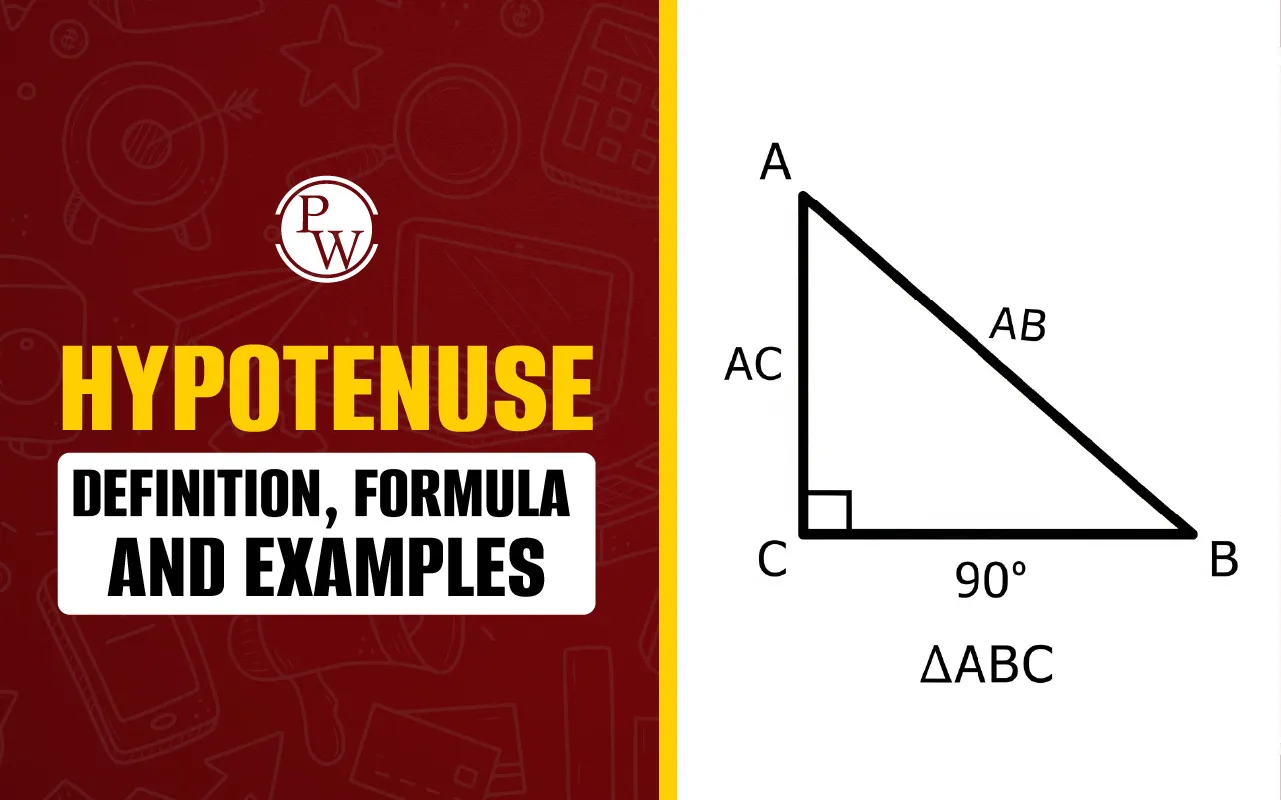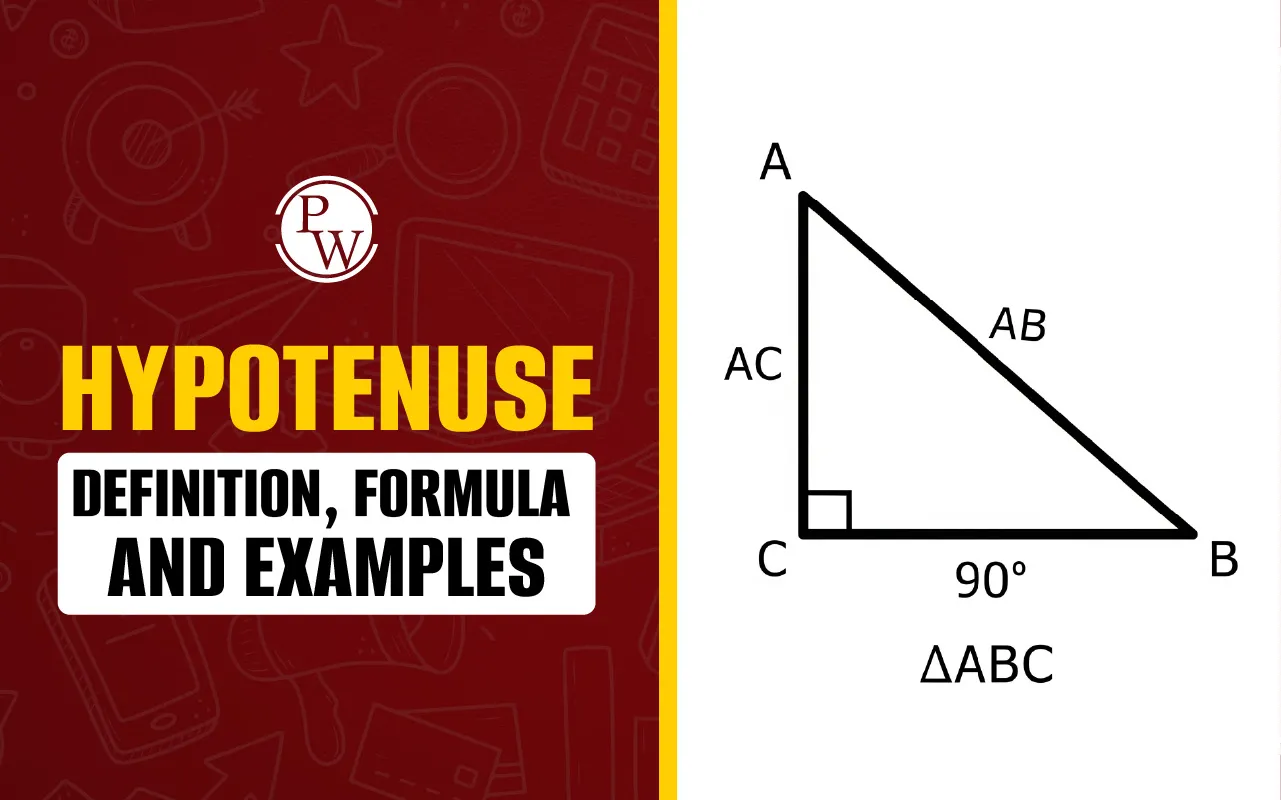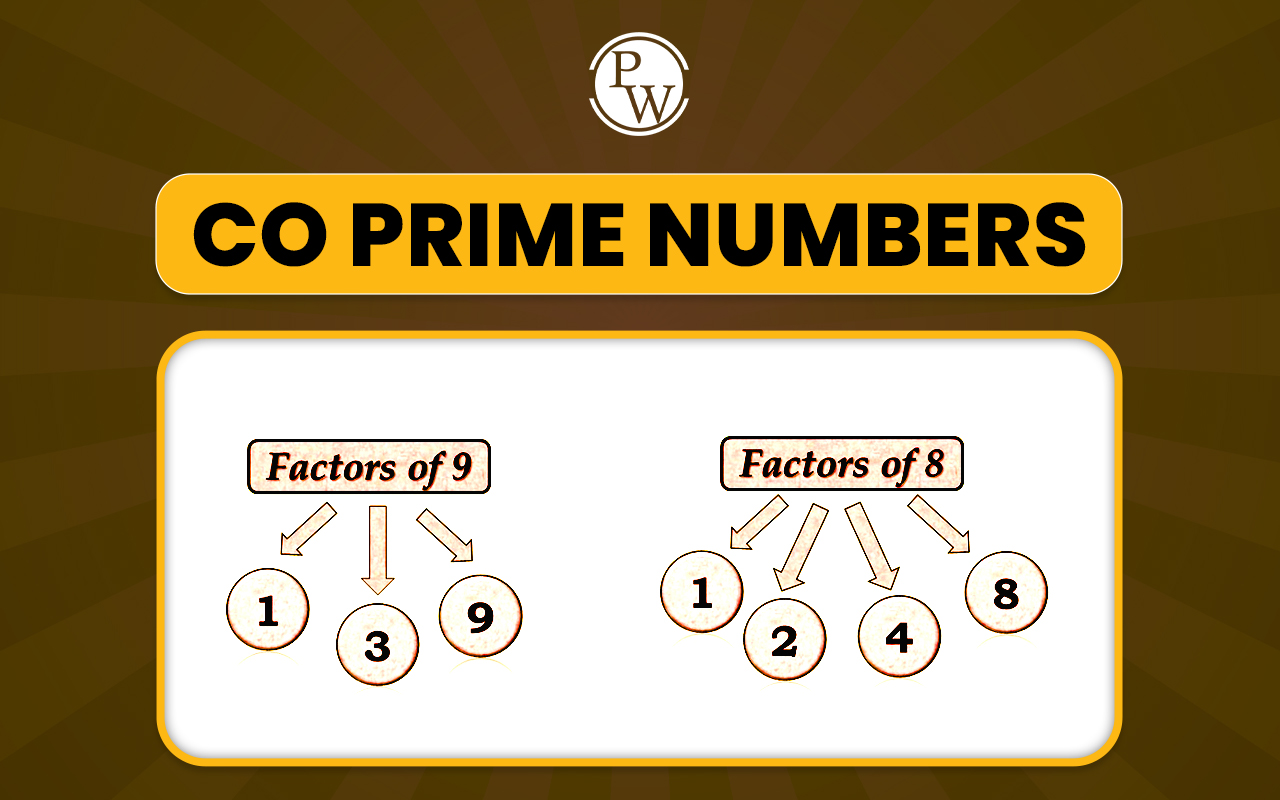

Hypotenuse
Hypotenuse is the longest side of a right-angled triangle, always lying opposite the 90° angle. It is easy to recognize since it is the slanting side of the triangle.
In geometry, it holds great importance because of its link to the Pythagoras theorem, which explains that the square of the hypotenuse is equal to the sum of the squares of the other two sides, called the base and the perpendicular.
Also read: Angle Definition, Parts, Types
Hypotenuse Definition
Hypotenuse is defined as the side whose square equals the sum of the squares of the other two sides:
a2 = b2 + c2
Where a and b represent the lengths of the two legs, which are the sides forming the right angle, and c represents the length of the hypotenuse.
Hypotenuse Formula
Hypotenuse formula is used to determine the dimension of the hypotenuse of a right-angled triangle. The formula is derived from the famous Pythagoras theorem, which states that the square of the hypotenuse of a right-angled triangle is the sum of the squares of the other two sides of the triangle.
Conventionally, we term the two smaller sides of a right-angled triangle as ‘base’ and ‘perpendicular.’
So, according to Pythagoras' theorem,
Hypotenuse² = Base² + Perpendicular²
It means if we know the dimensions of the two sides other than the hypotenuse, we can easily determine the hypotenuse of the right-angled triangle using the hypotenuse formula.
So, the Pythagoras theorem-based hypotenuse formula can be written as
Hypotenuse = √ [Base² + Perpendicular²]
This is the hypotenuse formula applicable to any right-angled triangle.
Also read: 30-60-90 Triangle
Hypotenuse Formula Proof
Let’s consider a right-angled triangle with:
-
Base = AB
-
Perpendicular = BC
-
Hypotenuse = AC
In triangle ABC, let us draw a line from B to touch the side AC at D.
In △ADB and △ABC, two corresponding angles are equal and one angle is common.
So, by the similar triangles’ theorem, we can write:
△ADB ~ △ABC
Therefore, AD/AB = AB/AC.
Or, AB² = AD x AC __________ (1)
Again, in △BDC and △ABC, two corresponding angles are equal and one angle is common.
So, by the similar triangles’ theorem, we can write:
△BDC ~△ABC
Therefore, CD/BC = BC/AC.
Or, BC² = CD x AC __________ (2)
Now, by adding equations 1 and 2, we get:
AB² + BC² = (AD x AC) + (CD x AC)
Or, AB² + BC² = AC (AD + CD)
Or, AB² + BC² = AC (AC)
Or, AB² + BC² = AC²
It proves the Pythagorean theorem and hypotenuse formula:
Base² + Perpendicular² = Hypotenuse²
Hypotenuse Formula Examples
Students can strengthen their concept of hypotenuse by solving problems using the hypotenuse formula. Here are a few solved examples of the sums using hypotenuse formula:
Example 1: Find the hypotenuse of a right-angled triangle with a base of 3 cm and a perpendicular of 4 cm.
Solution:
Using the formula, we can write
Hypotenuse (h) = √ [(3)² + (4)²] = √ 9 + 16 = √ 25 = 5
So, the hypotenuse of the given triangle is 5 cm.
Example 2: A right triangle has a hypotenuse of 13 cm and one side of 5 cm. Find the length of the other side.
Solution:
If the length of the other side is ‘a,’ then according to Pythagoras’ theorem, we can write:
(13)² = (5)² + (a)²
Or, (a)² = (13)² - (5)²
Or, (a)² = 169 – 15 = 144
Or, a = √144 = 12
So, the length of the other side is 12 cm.
Example 3: A 10-meter ladder stands on horizontal ground and reaches 8 meters up a vertical wall. How far is the foot of the ladder from the wall?
Solution:
The ladder acts as the hypotenuse, the wall is the perpendicular, and the ground is the base.
Here, Hypotenuse (h) = 10, Perpendicular (p) = 3
If the distance of the foot of the ladder from the wall is taken as ‘b,’ then according to the hypotenuse formula, we can write:
(10)² = (8)² + (b)²
Or, (b)² = (10)² - (8)²
Or, (b)² = 100 – 64 = 36
Or, b = √36 = 6
So, the distance of the foot of the ladder from the wall is 6 meters.
Example 4: Town B is 24 km east and 7 km north of town A. What is the shortest distance from town A to town B?
Solution:
The shortest distance between point A and point B is the straight-line connecting A and B. It is the hypotenuse of a right-angled triangle with a base of 24 km and a perpendicular of 7 km.
So, (AB)² = (24)² + (7)²]
Or, (AB)² = 576 + 49
Or, (AB)² = 625
Or, a = √625 = 25
So, the shortest distance between A and B is 25 km.
Sometimes, calculations can be tricky, especially with large numbers. In such cases, a hypotenuse calculator comes in handy. Students can find the hypotenuse calculator as a useful online tool where they can simply enter the values of the base and perpendicular, and it automatically gives the value of the hypotenuse.
However, students are recommended not to rely on hypotenuse calculators and practice using the calculations manually to develop their analytical and problem-solving skills.
Hypotenuse Applications in Maths and Science
The hypotenuse is not just a component of a triangle; it has useful applications in many branches of mathematics and science, as mentioned below:
-
Geometry: The concept of hypotenuse helps to calculate distances and angles.
-
Trigonometry: The hypotenuse forms the basis for defining sine, cosine, and other trigonometric functions.
-
Coordinate Geometry: The hypotenuse concept is applied in the distance formula to find the diagonal distance between two points.
-
Physics: It becomes a useful tool for explaining diagrams related to motion, distance, and force and helps in associated calculations.
-
Engineering: The hypotenuse formula is used in designing roofs, bridges, and triangular supports.
Also read: Tricks to remember trigonometry values
Make Your Child a Math Pro with CuriousJr
Is your child struggling with slow calculations or relying too much on fingers?
CuriousJr’s Mental Maths Online Classes for Grades 1 to 8 help children become faster, more confident, and capable in maths. Our classes use engaging animations, fun games, and achievement rewards to make learning enjoyable, while live guidance and post-class doubt support ensure every question is answered.
With regular practice and performance tracking, your child will not only think and calculate faster but also develop problem-solving skills, logical thinking, and confidence to excel in school exams. By turning maths into a fun and rewarding experience, CuriousJr helps your child transform numbers into superpowers every day.
Book a demo today and see the difference!
Hypotenuse FAQs
Where do we see hypotenuse in everyday lives?
What is a practical use of the hypotenuse formula?
How do trigonometric ratios use the hypotenuse concept?
What is the right triangle altitude theorem?













